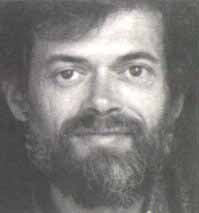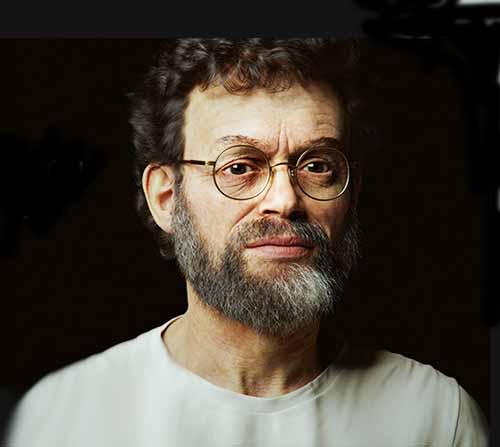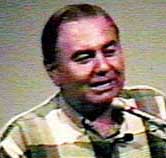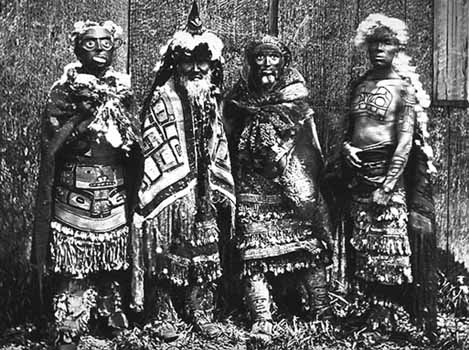|
In western culture during the 1960's Harvard researchers and
experimenters like Dr. Timothy Leary. Dr. Leary was a guest on my television talk show, "The Metaphysical Experience". Leary
believed that these drugs can help lift you into a higher reality space to have better understanding of other realities. When
I looked in his eyes, all I could see was a lost soul still searching. Shortly after that he became ill. He has since passed
over. I do not chose to speak with him over there.
Timothy Francis Leary (October 22, 1920 ? May 31, 1996) was an American
writer, psychologist, campaigner for psychedelic drug research and use, 60s counterculture icon and computer software designer.
He is most famous as a proponent of the therapeutic and spiritual benefits of LSD. During the 1960s, he coined and popularized
the catch phrase "Turn on, tune in, drop out." Continued
Along with Dr. Leary, Dr. Ralph Minzer, and Dr. Richard Alpert explored
these domains from a scientific perspective linking them with books like the Tibetan Book of the Dead.

Dr. Richard Alpert was born April 6, 1931. He later known as Baba Ram Dass
Alpert was a professor of psychology at Harvard University who became
well known for his controversial research program which studied the effects of LSD.
He later converted to Hinduism and is currently one of the most
prominent American Hindus. He was born to a prominent Jewish family in Boston, Massachusetts.
Alpert worked closely with Dr. Timothy Leary at Harvard, where the
two conducted many experiments on the effects of LSD. The pair were dismissed from the university in 1963 due to their controversial
research on the Harvard Psilocybin Project. They relocated, and continued their experiments at a private mansion in New York.
In 1967, Alpert traveled to India, where he became heavily involved
in meditative practice and yoga. After meeting and becoming a devotee of Neem Karoli Baba, a Hindu guru in Uttar Pradesh,
he changed his name to Ram Dass, meaning servant of God.
Upon his return to the United States, Alpert founded several organizations
dedicated to expanding spiritual awareness and promoting spiritual growth. In February 1997, he suffered a stroke which left
him with expressive aphasia, but he continues to give lectures at a variety of places.
CARLOS CASTANEDA
Carlos Castaneda was born in Peru on December 25, 1925 and died in Los Angeles on April
27, 1998. In the US, he wrote a controversial series of books that claimed to describe his training in traditional Native
American Shamanism.
Castaneda met the Yaqui shaman Don Juan Matus in 1960, which inspired
the partly autobiographical works for which he is known. He inherited from this figure the position of nagual, or leader of
a party of seers.
Castaneda's works contain descriptions of paranormal experiences,
several psychological techniques, Toltec magic rituals, shamanism and experiences with psychoactive drugs (e.g. peyote). Carlos
Castaneda's works have sold more than 8 million copies in 17 languages.

Don Juan Teachings
TERRANCE MC KENNA

Researchers such as Terrence McKenna found that using hallucinogens
helped increased their awareness of other realities.
His books include his theory on Time Wave Zero which was triggered by a 1971 shamanic-like experiment conducted by
Terrence and his brother Dennis in the rainforest of the Columbian Amazon. Terence was told by alien voices (what he calls
the Logos) that the I Ching was part of an ancient machine of time and a way to understand the future.
Later using a transformation of the King Wen sequence of the I Ching
hexagrams, Terence in collaboration with programmer Peter Meyer, developed a rigorous mathematical algorithm for the Time
wave. This algorithm correlates time and history with the ebb an flow of experiential connectedness which McKenna finds intrinsic
to the structure of the temporal universe.
On December 21, 2012 the Time wave reaches a Zero Point which will create a radical and complete transformation of our conceptions
of the world. This date corresponds to the winter soltice of that year and is also the end of the current era in the Mayan
calendar. From an astronomical point of view the sun will rise in a position that will eclipse the galactic center, which
occurs every 26,000 years.
Terence McKenna (November 16, 1946 - April 3, 2000) was a writer
and philosopher. He was notable for his many speculations on subjects ranging from the Voynich Manuscript to the origins of
the human species to Novelty Theory, which claims time to be a fractal wave of increasing novelty, which ends abruptly in
2012. McKenna's theory is related to the theory of the technological singularity, except that McKenna advocated what he called
an Archaic Revival as the antidote to what he saw as the self-destructive nature of unchecked, technological development.
This concept appeared to involve a combination of hallucinogenic drugs, Gaianism, and shamanism. Continued

Terrence McKenna
WHITE POWDER GOLD
Anything having to do with the word 'gold' has to do with the evolution
of conscicousness. Gold also linke with blood - bloodlines - DNA and a virtual genetic experiment in time - that we are all
experiencing.
The White Powder of Gold is a multitude of things. It is allegedly
the Elixir of Life. It is likewise, the Philosopher's Stone of Alchemy, the manna of the ancient Hebrews, and even was even used by the ancient
Egyptians.
In science, the white powder of gold is the ORME -- i.e. gold (or
any of the Precious Metals) in a monoatomic form -- which can result in Superconductivity within an organic body. When the
white powder of gold is mixed in water, it becomes the Elixir of Life, the alchemist's dream -- also known as The Golden Tear
from the Eye of Horus, or 'That which issues from the mouth of the creator.
It was also called as the 'Spittle of God' -- not the word of God,
but the spittle. Others referred to it as the semen of the father in heaven. [Putting the white powder in water doesn't result
in it dissolving. Instead, it forms a gelatinous suspension, and looks very much like a vial of semen.]
For the alchemists, the goal had always been to make the white powder
of gold, to make 'the container of the light of life.' Thereafter, if you stood in its presence, you wouldn't age. If you
partook of it, you would live for ever.
It's history goes back to Thoth - - Enoch - - Hermes Trisgetimus, the same man by any other name, who ascended to heaven by partaking
of the white drops, and thereby avoided death.
In The Egyptian Book of the Dead and the Papyrus of Ani,
by Budge -- based on a papyrus from Old Kingdom Egypt -- there is a curious repetition of the phrase, "What is it?"
Samples from the papyrus reads, "I am purified of all imperfections.
What is it? I ascend like the golden hawk of Horus. What is it? I pass by the immortals without dying. What is it? I come
before my father in Heaven. What is it?" The latter question repeats itself for hundreds of times throughout the lengthy ancient
document.The ?What is it?? literally translates into Hebrew as 'manna'.
Even a modern dictionary may define manna as "What is it?".
The manna was the 'bread' taken by the high priest, the Melchizedek
priest. Moses told the Hebrew people at one point, "You have not kept the covenant, and so the manna is being taken from you.
But it will come back in the end times. When we will be a nation of high priests, not an elect high priesthood."
The manna, the white powder of gold, is the food, the light, one
takes into their body. It is the Food of the Gods. A modern day Rabbi might tell you that no one has known how to make the
manna, the white powder of Gold, since the destruction of the Temple of Solomon. The technique is, supposedly, a lost art
or lost knowledge. But others argue that when the high priests left the Temple (when it was destroyed), the took the secret
out into the desert and organized a commune called Qumrun. There, they became the Essenes. Eventually, the white powder was
used to nourish a woman named Mary, and eventually, she gave birth to a man named Jesus. Some claim that it was the white
powder of gold which allowed Jesus his many gifts, including his ascension into heaven.
These gifts include:? perfect telepathy, the ability to know good
and evil when it?s present, and to project thoughts into another person's mind.? There is also the ability to levitate, or
to walk on water.? By excluding all external magnetic fields (including the Earth's gravity), the white powder of gold takes
one beyond the four dimensional space time continuum, and the individual becomes a fifth dimensional being.? They can literally
think where they would like to be, and go there.? They can heal by the laying on of hands, and can cleanse and resurrect the
dead within two or three days after they died.? They have so much energy that they can literally embrace people and bring
light and energy back into them.?
In Revelations, it says, "Blessed be the man who shall overcome,
for he shall be given the hidden manna, the white stone of the purest kind upon which will be written a new name. He
will not be the same person.
Derived from gold, platinum group metals and other transition elements,
these impalpable white powder substances have been referred to as 'monatomic' (a single atomic state).
As such, they were classified by their research pioneer, David Hudson,
in the 1980s as ORMEs (Orbitally Rearranged Monatomic Elements). [see below]
New understandings in physics suggest, however, that the powders
might actually be 'diatomic' or small atomic cluster 'condensates'. It is now generally accepted, therefore, that the materials
might be more universally referred to by the generic terms ORMUS or 'M-state' elements.
Thermo-gravimetric analysis has revealed that, at certain high temperatures,
the material weight of M-state elements will reduce substantially, even to the degree that they will levitate. In specific
circumstances they also have the ability to become superconductive and to resonate in parallel dimensions.
In Greek mythology the quest for the secret of this substance was
at the heart of the Golden Fleece legend, while in biblical terms it was the mystical realm of the Ark of the Covenant - the
golden coffer which Moses brought out of Sinai, to be housed in the Temple of Jerusalem. The ancient Mesopotamians called
the powder 'shem-an-na' (highward fire-stone) and the Egyptians described it as 'mfkzt', while the Alexandrians venerated
it as the Paradise Stone.
Made into conical cakes, or suspended in water, the enigmatic fire-stone
powder was a ritually ingested supplement of the ancient kings and pharaohs. It was revered as the food of the 'light body'
(the ka) and was reckoned to heighten general aptitudes of leadership, such as awareness, perception and intuition. It was
further considered to be a key to active longevity.
Today, there are a number of companies manufacturing products containing
M-state substances. Some are working from a pure gold base, while others are using platinum group trace elements from sea
sediments and volcanic or meteoric Earth sources. The extent to which these products might individually approach the fully
charged superconductive state, however, is unknown to us at this time since the enigmatic powders do not react to conventional
analysis as do the metallic elements from which they derive.
The manna, the white powder of gold, is the food, the light, one
takes into their body. It is the Food of the Gods. A modern day Rabbi might tell you that no one has known how to make the
manna, the white powder of Gold, since the destruction of the Temple of Solomon. The technique is, supposedly, a lost art
or lost knowledge. But others argue that when the high priests left the Temple (when it was destroyed), the took the secret
out into the desert and organized a commune called Qumrun. There, they became the Essenes. Eventually, the white powder was
used to nourish a woman named Mary, and eventually, she gave birth to a man named Jesus. Some claim that it was the white
powder of gold which allowed Jesus his many gifts, including his ascension into heaven.

David Hudson is a fourth generation Arizona farmer
who became interested in extracting gold and silver from the tailings of old mining sites near his 675 acre farm. When he
began the recovery process he soon discovered that gold and silver were being lost because of the buildup of a powdery substance
referred to as "ghost gold" by many miners and metallurgists.
Hudson's curiosity led him to work with spectroscopists at Cornell
University and other labs to discover the elemental ingredients of this powder. Initial findings of the sample yielded iron,
silica, and aluminum. Further extraction of these elements left 98% of the powder intact. The surprise was that this 98% consisted
of nothing which could be identified through normal spectroscopic analysis.
As a result of Hudson's research, he knew that the electrons flowing
through a superconductor pair off and are converted to a light frequency in the process. He theorized that this might be the
same process occurring in human cells. Hudson discovered papers published by Bristol-Myers-Squibb Laboratories and others
which indicated intense experimentation was being done utilizing precious elements in the treatment of cancer. These elements
were shown to interact with the cell by a vibrational frequency or by light transfer to correct the mutant DNA. When Hudson
applied his proprietary method of analysis to Essiac Tea (an alternative treatment for cancer), he discovered high levels
of rhodium and iridium. He also found that Acemannan, a derivative of the aloe vera plant currently being tested on AIDS patients,
is 90% rhodium!
David Hudson's life took an abrupt turn in 1990 when his uncle brought
him a Time-Life book, Secrets of the Alchemists. The goal of the alchemists was to make a white powder of gold that
would serve as the container of the "light of life". This search for the white powders has been termed the search for the
philosopher's stone.
Encyclopedia Britannica says: "The stone, also referred to as the
'tincture' or 'powder' - was allied to an elixir of life. Inasmuch as alchemy was concerned not only with the search for a
method of upgrading less valuable metals, but also of perfecting the human soul, the philosopher's stone was thought to cure
illness, prolong life, and bring about spiritual revitalization."
SHAMANISM

Generally, the shaman traverses the axis mundi and enters the spirit world by effecting a change of consciousness
in himself, entering into an ecstatic trance, either autohypnotically or through the use of entheogens - hallucinogenic drugs used in a religious or shamanic context. The
drugs used are diverse, and often are used in conjunction with each other.
The New Age movement imported some ideas from shamanism as well
as Eastern religions. As in other such imports, the original users of these ideas frequently condemn New Age use as misunderstood
and superficial.
Throughout the ancient Americas, rulers and shamans used hallucinogens
to connect with the spirits of the other world. They believed that only those in touch with the supernatural realm could heal
the sick, predict the future, ensure the fertility of the world, and resolve the larger problems of existence.
Natural hallucinogens were regarded by pre-Columbian cultures as
sacred and endowed with inherent force. Their preparation and ingestion were associated with elaborate rituals, and they were
consumed only by people considered to have sufficient power to communicate with the spirits and ancestors who dwelled in the
other world.
The most important sacred substance for the Taino was cohoba, a psychoactive powder ground from the seeds of trees native
to South America and the Caribbean. The Taino sometimes mixed cohoba with tobacco to maximize its effect.
Taino shamans took cohoba to cure illnesses for individual patients
and to ensure the well being of the community. Caciques took cohoba to communicate with zemies (spirits and ancestors); they
acted as the primary intermediaries between people and the supernatural realm.
Before ingesting such hallucinogenic mixtures, caciques and shamans
fasted and purged themselves with vomiting spatulas of wood and bone in order to consume the "pure foods" of the spirits.
Then, they inhaled their concoctions from small vessels and trays, using delicately carved snuffers of wood and bone.
The Taino believed it was possible to travel to the supernatural
realm during cohoba-induced trances. One of the strongest psychoactive substances used in the pre-Columbian world, cohoba
is still taken by shamans in the Amazon Basin of South America.
The effects of cohoba make the user see the world in an inverted
way: people, animals, and objects appear upside down; movements and gestures are reversed; and perceptions are marked by constantly
shifting shapes and kaleidoscopic colors. Everything is the opposite and the inverse of the here and now, intensely colored,
and completely mutable.
Many Taino works associated with the cohoba ceremony, especially
the vomiting spatulas, are exquisitely carved with fierce animals, upside-down images, and skeletal figures from the other
world. Thus spatulas are unique in the corpus of pre-Columbian art.
Ceramic figures on duhos illustrate stages of the cohoba ritual,
from the initial use of the spatula to the aftermath of stupor, fatigue, and spiritual exhaustion. Once the hallucinogen was
inhaled through snuffers, the cacique or shaman would sit on his duho, elbows resting on knees, body hunched forward, lost
in the thoughts and images that would result from cohoba's swift effect. In this position, caciques and shamans communicated
with spirits and ancestors. The duhos themselves probably had inherent supernatural power, which "centered" the user in the
fifth direction - in the center of the cosmosaa concept important to pre-Columbian societies.
Psychedelic Mushrooms - are also known as magic mushrooms, sacred mushrooms, and, more
generally, hallucinogenic mushrooms. They are fungi which have psychedelic, i.e. "mind manifesting", properties when ingested.
Mescaline is a hallucinogenthat comes from the Peyote cactus Mescaline
is ingested.
Peyote
The study of shamanism and hallucinogenic drugs it is important
to include data concerning a group whose experiences with the hallucinogenic peyote cactus in shamanistic rituals resulted
in serious conflict and, ultimately, proscription of the ceremonial use of the drug.
The Apaches of the Mescalero Indian Reservation used peyote in shamanistic
contexts between about 1870 until some time after 1910.
Aboriginal religio-medical philosophies, the criteria for according
the status of shaman to individuals, and shamanistic procedures have been similar if not identical among the three tribes
in recorded time. They conceive the world to be permeated by supernatural power which has no intrinsic attribute of good or
evil; its virtue resides in its potency.
Power approaches people through the agency of a plant, animal, or
natural phenomenon by means of a dream or other hallucinatory experience; its acceptance is frequently accompanied by an ordeal.
Ritual instruction may be received directly from the power or from other shamans. Any person is a possible power recipient.
There is a fundamental incongruity between the principles involved
in ordinary Mescalero shamanistic ceremonies and the rules that applied to peyote rites. In ordinary shamanistic practices,
a single shaman is tire principal figure and the experiences of attendants at ceremonies are subordinate. Religious ecstasy,
visions, and communications with supernaturals are the shaman's prerogatives and validate his power and efficacy. The use
of peyote by other people at ceremonies made its psychological and physiological effects common, and the uniqueness of the
shaman's experiences disappeared. The peyote meetings became places in which shamanistic rivalries and witchcraft flourished.
Disruption resulted, rather than cohesiveness through shared experience.
| 
